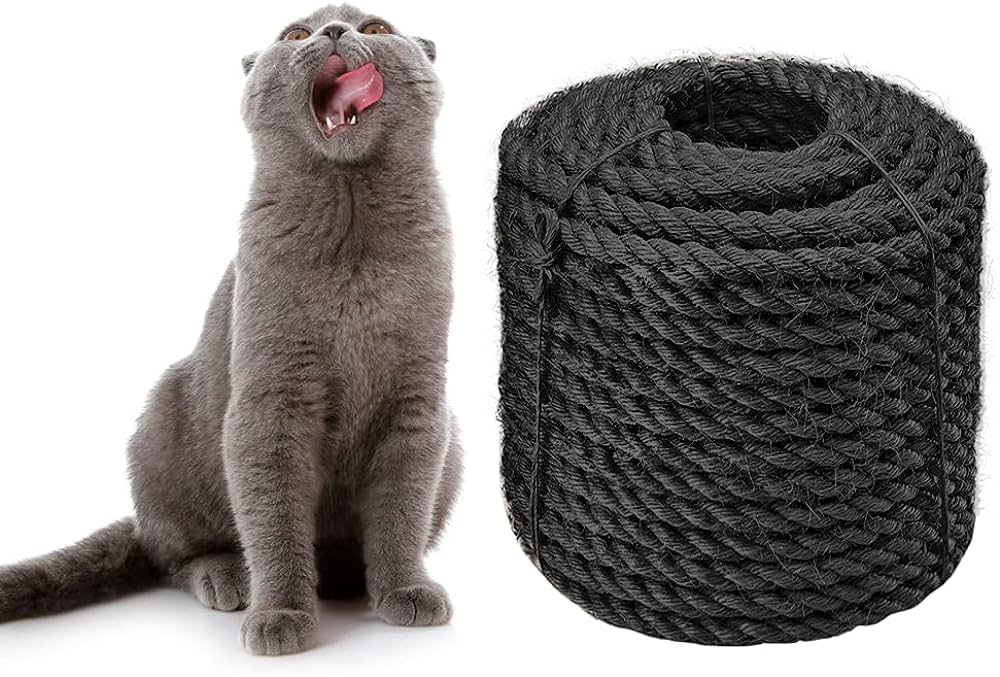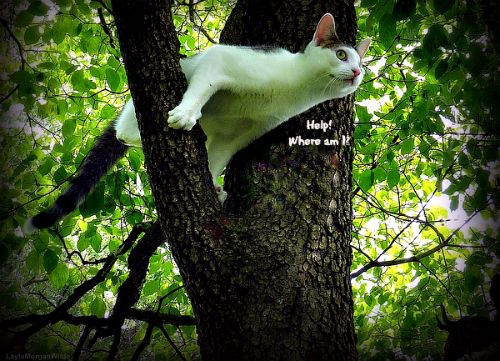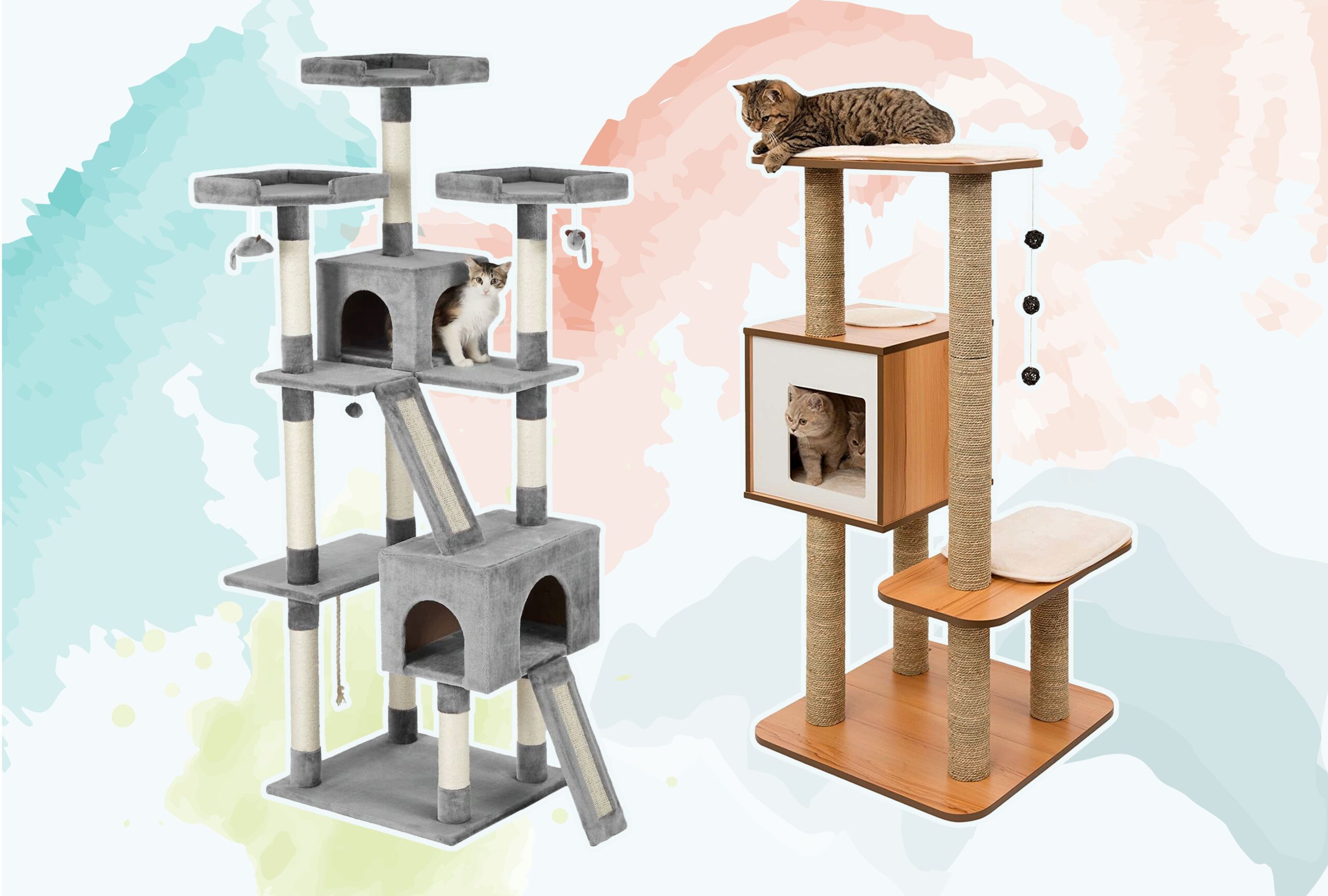Cat trees typically last from 1 to 5 years, depending on usage and quality. Factors like material, construction, and cat behavior affect longevity.
Selecting the right cat tree can be a game-changer for both pet owners and their feline friends. Cat trees provide cats with their own space to climb, scratch, and rest, which is essential for their physical and mental health. A well-constructed cat tree made from high-quality materials like solid wood and durable fabric can withstand the test of time, while cheaper options may need replacement more frequently.
Regular maintenance, including tightening loose parts and cleaning, can also help extend a cat tree’s life. Understanding these considerations helps cat owners make informed decisions, ensuring their pets enjoy a safe and stimulating environment for years to come.
The Life Span Of Cat Trees
Cat trees are playgrounds for our feline companions. They last differently, depending on several factors. A cat tree can stand tall for a few months to several years. This variation is due to different materials and usage. With good care, even the most loved cat trees can surprise you with their durability.
Materials Make the DifferenceMaterials Make The Difference
The longevity of a cat tree starts with its materials. Strong materials mean a longer life for cat trees. Here’s how materials impact durability:
- Wood: Sturdy and long-lasting.
- Particleboard: Less durable than wood but more affordable.
- Carpet: Adds comfort but can wear down.
- Sisal Rope: Excellent for scratching, extends the life span.
Choose quality over price for a longer-lasting tree.
Signs of Wear and TearSigns Of Wear And Tear
Here are the telltale signs that your cat tree may need replacing:
- Loose Parts: Wobbly posts or platforms.
- Ripped Fabric: Torn covering, especially carpet.
- Frayed Rope: Scratching posts wearing thin.
- Stability Issues: A shaky base can be dangerous.
Early detection of these signs can help prevent accidents and let you know when it’s time for a new cat tree.
Factors Affecting Durability
When picking a playground for a furry friend, it’s natural to wonder about the lifetime of a cat tree. Certain elements dramatically influence how long cat trees keep their appeal and function. Here’s an in-depth look at those factors.
Design And Construction
The build of the cat tree sets the stage for its longevity:
- Quality of Materials: Durable woods and heavy-duty fabrics stand the test of time.
- Stability: A sturdy base prevents tipping and wear.
- Assembly: Secure joints and connections mean longer-lasting structures.
Opting for premium materials and smart design can extend the life of a cat tree significantly.
Type Of Use
Cats have unique personalities that affect their play:
| Cat’s Activity Level | Effect on Durability |
|---|---|
| High-energy felines | More stress on the cat tree, reduces lifespan |
| Calm, laid-back cats | Less strain, prolongs durability |
Recognizing a cat’s behavior will help in selecting a cat tree that lasts.
Maintenance Routines
Regular upkeep ensures a lasting habitat:
- Cleaning: Removes debris and oils, safeguarding materials.
- Inspection: Identifies and fixes loose parts.
- Replacement: Substitutes worn sections, such as scratching posts.
Proper care makes sure a cat tree remains a safe and tempting spot for feline fun.
Choosing The Right Cat Tree
Welcome to the ultimate guide on picking the perfect cat tree for your furry friend!
When it comes to keeping your cat entertained and active, choosing the right cat tree can make all the difference. Not only will it serve as their personal space for climbing and scratching, but it can also be an attractive addition to your home decor. With the right selection, cat trees can last for many delightful years.
Size And Stability
A good cat tree needs to fit your space and keep your cat safe. Here’s what to consider:
- Measure your space: Ensure the tree fits where you plan to put it.
- Check the weight limit: The cat tree should support your cat’s weight.
- Look for a wide base: Stability is key to prevent tipping.
Select a model tall enough for adventure but sturdy enough to stand firm.
Materials And Quality
Material choice impacts both durability and comfort.
| Material | Benefits |
|---|---|
| Natural Sisal | Great for scratching and longevity. |
| Plush Carpet | Soft for lounging and attractive. |
| Pressed Wood | Heavy-duty and durable. |
High quality materials ensure your cat enjoys their tree without quick wear and tear.
Brand And Price
Consider brand reputation and the price you’re willing to pay.
- Read reviews: See what other pet owners say.
- Compare prices: Shop around for the best deal.
- Invest in quality: A higher price often means better quality.
Remember, a reputable brand can offer a long-lasting, safe environment for your cat.

Credit: www.amazon.com
Maintenance Tips To Extend Lifespan
Investing in a cat tree is like investing in a fun playground for your feline friend. To ensure your cat enjoys its personal space for as long as possible, proper maintenance is key. Below are some vital tips that can help extend the life of your cat tree.
Regular Cleaning
Keeping your cat tree clean is essential for both hygiene and longevity. Follow these steps:
- Vacuum the cat tree weekly to remove hair and dirt.
- Use a mild soap and water solution to spot clean.
- Ensure the tree is dry before letting your cat use it again.
Repair And Replacement
Inspect your cat tree regularly for any signs of wear or damage. Make timely repairs to prevent further damage:
- Check for and tighten any loose screws or parts.
- Replace worn out scratching posts or platforms.
- Reinforce any wobbly sections to ensure stability.
Encouraging Proper Use
Training your cat to use the tree correctly can prevent misuse that leads to damage:
- Guide your cat to the scratching posts rather than furniture.
- Use treats and toys to make the cat tree an appealing spot.
- Avoid rough play around the tree that could cause tipping.
When To Replace A Cat Tree
Understanding when to replace a cat tree is vital for your feline’s fun and well-being. Cat trees see a lot of action. Over time, they may show signs of wear and tear. Not sure if it’s time for a new one? Look for these indicators:
Safety Concerns
Your cat’s safety comes first. Watch for these red flags:
- Loose parts that could cause falls
- Protruding nails or screws
- Wobbly base risking toppling over
Regular inspections help catch issues early.
Irreparable Damage
Some damage can’t be fixed. Time for a new cat tree when you spot:
- Deeply scratched posts losing structure
- Fabric tears beyond mending
- Bent or broken platforms
Alternatives To Replacement
Replacing a cat tree may not always be needed. Consider these:
| Alternative | When to Use |
|---|---|
| Repair | Minor damage |
| Restyle | Refresh look |
| Add-ons | Expand play area |
Simple tweaks can extend your cat tree’s life.
:strip_icc()/best-cat-trees-4159408-da66af890782426fb82e6036af07b36b.jpg)
Credit: www.thesprucepets.com
Sustainability And Disposal
The sustainability and disposal of cat trees are vital considerations for pet owners mindful of their environmental footprint. Cat trees offer feline friends joy and exercise but eventually reach a point where they must be replaced. Thoughtful disposal and choosing eco-friendly options can significantly reduce waste and environmental impact.
Recycling Old Cat Trees
As cat trees succumb to wear and tear, recycling becomes an eco-conscious solution. Old cat trees can take on new lives instead of ending up in landfills. Here are ways to recycle:
- Donate gently used cat trees to animal shelters or rescues.
- Repurpose parts like platforms or scratching posts for DIY projects.
- Upcycle the structure into a plant stand or bookshelf.
Engaging with local recycling programs that accept fabric and wood can also divert materials from waste streams.
Eco-friendly Options
Choosing eco-friendly cat trees can extend the lifespan and reduce the environmental toll. Look for these features:
| Feature | Benefit |
|---|---|
| Sustainable Materials | Less environmental damage |
| Non-toxic Adhesives | Healthier for your pet |
| Replaceable Parts | Longer-lasting use |
Seek brands committed to green practices or those offering replaceable components. This allows for targeted repairs instead of full replacements, thus prolonging the cat tree’s life and conserving resources.

Credit: www.ebay.com
Frequently Asked Questions Of How Long Do Cat Trees Last
What Is The Typical Lifespan Of A Cat Tree?
Cat trees typically last between 3 to 5 years. Durability depends on material quality, construction, and frequency of use. Regular maintenance can extend their life.
How To Maintain A Cat Tree For Longevity?
To prolong a cat tree’s life, vacuum it weekly. Tighten loose screws and replace worn parts as needed. Avoid excessive moisture to prevent damage.
Can A Cat Tree Last A Lifetime?
No, cat trees do not last a lifetime. Wear from regular use means they require eventual replacement. However, high-quality trees can last up to 10 years.
What Factors Affect A Cat Tree’s Durability?
Factors include material quality, design, cat’s activity level, and maintenance. Heavier use demands sturdier construction for longer-lasting cat trees.
Conclusion
Caring for a cat tree extends its life, ensuring your feline friends enjoy their perches for years. Regular maintenance and quality materials play crucial roles. Remember, a well-loved cat tree reflects a well-loved cat. Invest wisely and maintain diligently for purr-fect results.
Keep those cat trees sturdy!



